
The Business of Fashion
Agenda-setting intelligence, analysis and advice for the global fashion community.

Agenda-setting intelligence, analysis and advice for the global fashion community.

LONDON, United Kingdom — This holiday season, there are a number of books that lovers of fashion must not miss. From "Cecil Beaton at Home: An Interior Life" to "The Fashion Set," here is my essential reading (and gifting) list of the best fashion books of the season.
Cecil Beaton at Home: An Interior Life (Rizzoli)
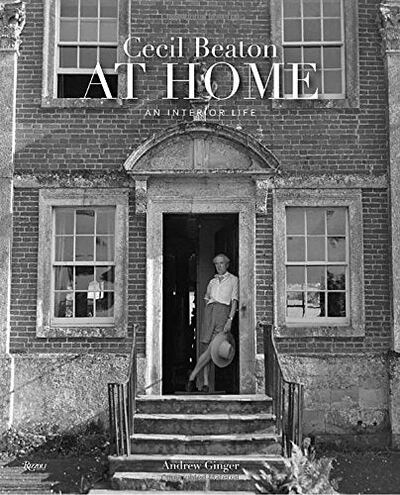
Cecil Beaton at Home | Source: Rizzoli
I am sure that Cecil Beaton would have loved this book. Lots of lovely photographs of him, often in drag; occasionally in a drummer boy’s tunic; but at his best in perfect Savile Row suiting to highlight his slim figure; all his friends — not all of whom he especially liked — having fun in his beautiful country houses. How could he not love this romantic tribute to his skills and lifestyle? Beaton was multi-talented — and to a high standard. Nothing he did, including "falling in love" with Greta Garbo, was ever paltry or half-hearted.
ADVERTISEMENT
At heart, I think, he was an interior decorator and there is a lot of that in this book: "the studio windows were dressed with plain linen curtains hanging from sturdy wooden poles, enhanced with two sizes of opalescent mother of pearl shell buttons...," and so on, and so on. Too much information? Yes, for most of us, but it shows Beaton’s keen eye and the respect for detail that his world required. And yet, the deeper one goes into this man’s life and entertaining, his designing, creating and diary keeping, the more it becomes apparent that Cecil Beaton — the great self-inventor — was one of the 20th century’s most remarkably varied and accomplished of creators in what are normally called the minor arts.
"Cecil Beaton at Home" is a book that will have a long life with most readers. Once read, it will frequently be dipped into — and his phenomenal eye and memory mean that whatever he wrote, if not whatever he said, is there for good from the horse's mouth, from which any tyro designer can learn a lot, including that often forgotten fact that for creators liker Beaton the plums do not fall from the tree into the lap. They have to be worked for, and if I were asked to sum up Cecil Beaton in one word, it would be "worker" — and that, in my opinion, goes a long way towards excusing some of the candy-coloured frivolity, the bitchery and the snobbery for which Beaton is usually remembered
Capturing Fashion: Derujinsky (Flammarion)
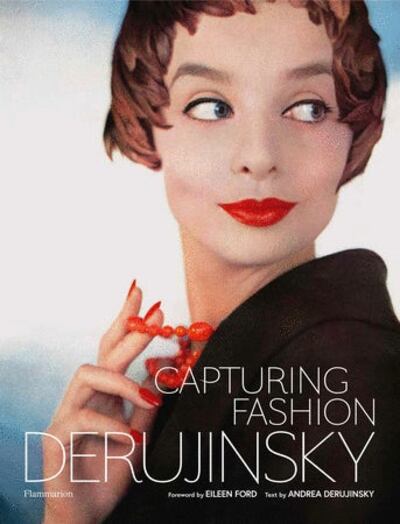
Capturing Fashion: Derujinsky | Source: Flammarion
We all know of Penn, Avedon and the many photographers who worked for America's "big beast" fashion publications in the '40s and '50s, pre-eminently Vogue and Harpers Bazaar — a line of talent well recognised and rewarded. But, in "Capturing Fashion," we discover another photographer — a contemporary of Penn and Avedon, who photographed fashion for Harper’s Bazaar in the Golden Years and deserves just as much credit as they get. His name was Derujinsky although he was always known as Gleb. His models were the women who Frank Sinatra immortalised in his song "Uptown Girls" — elegant, classy and often distinctly haughty. His colleagues were Carmel Snow, Diane Vreeland and Alexey Brodovitch, the most powerful and successful triumvirate ever known in fashion magazine publishing. And they all loved Paris couture and the elegant New York clothes they inspired.
Gleb’s background was Russian, aristocratic and artistic although his great love was piloting planes. His creative mentor was Horst P. Horst, one of the great photographers of the '30s and '40s. Gleb loved women and his passion was using his camera to capture female beauty. He married four of his models and used all the big names on the New York agent’s books, including Carmel Dell’Orefice (still modelling today), Sunny Harnett and Evelyn Tripp, who appeared regularly in the pages of Harper’s Bazaar, photographed by Gleb with New York as the back drop. But he also travelled to find the exotic and glamorous settings for the clothes that Diane Vreeland suggested he photograph. Their great moment was when they decided to fly around the world, land in certain countries or cities, and remain no longer that 48 hours. The object was to photograph an outfit a day in places as far apart as Hawaii and Bali, Mexico and Spain. It was bold and successful but, in my opinion, what made Gleb Derujinsky special was not crazy ideas. Although he photographed the couture collections in Paris, as Penn and Avedon did, he did some of his very best work in New York, in the streets and parks of Manhattan, and it was (and is) eye-opening how successfully he integrated the clothes with the street scene. This is a photographer very well worth bringing out of the shadows of neglect to take his rightful place with the other top photographic talents of his time.
Runway: The Spectacle of Fashion (Rizzoli) & The Fashion Set: The Art of the Fashion Show (Roads)
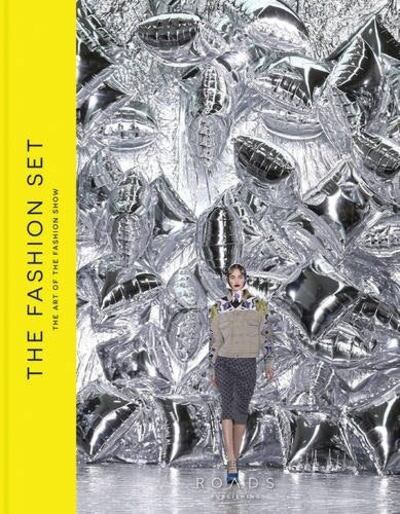
The Fashion Set | Source (Roads)
ADVERTISEMENT
Two unusual books pinpointing shows and their presentation make it apparent that for the fashion houses rich enough to afford it, the dressing of the venue is now almost as important as the actual show itself and probably as expensive. For Raf Simon's first show for Christian Dior, the salons where the audience sat were "papered" with real blooms from ceiling to floor. A touching reference to Christian Dior's deep love of flowers or a gift for the writers to comment on? Probably both. Miuccia Prada has built increasingly ambitious mise en scène for her shows and Karl Lagerfeld has created such elaborate and vast edifices that they almost eclipse the clothes at his couture presentations. Are we witnessing a change in the purpose of attending a defile? Is it meant to be the clothes that send the audience home buzzing with excitement or is the talk increasingly about the dressing of the setting? Has the Internet, and the instant access it gives to the world, made reporting of fashion no longer enough for the millions who are waiting to see and hear about everything that is going on, not just the clothes.There is certainly a growing possibility that this could soon become the case.
So it is appropriate to have two books that bring to a wider audience the real magic of the show, a magic that can — as in the case of early McQueen and Galliano — seem almost deliberately conceived to swamp the clothes by using the ambience to fully express the designer's thoughts, including in both of those cases, ones too dark to be personified in clothes alone — and to cloud the fact that, in terms of the runways, the mixture is sometimes not so very different from that of the season before. Smokescreen? Brief aberration? Or the future? We all have our own views but it is good to see that fashion followers can now place the clothes in context. These two books should be read by all involved with fashion, including lecturers and mentors for students.
Bernard Boutet de Monvel: At the Origins of Art Deco (Flammarion)
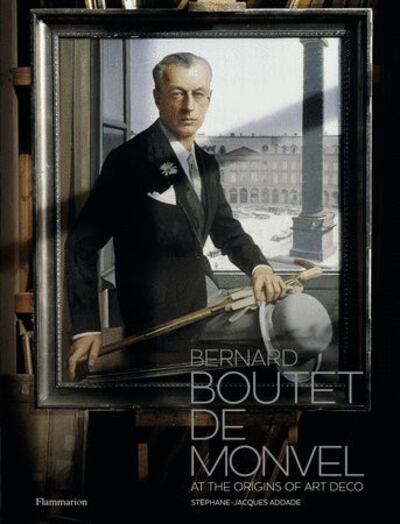
Bernard Boutet de Monvel | Source: Flammarion
Cecil Beaton recorded the period of his long life in photographs and sketches. The latter were charming but slight. For a true picture of how the rich dressed from the '20s to the late '40s, it is essential to look at the portraits of the rich and powerful that were painted in minuscule detail by Bernard Boutet de Monvel through the '20s and '30s. An aristocrat, he tended to paint other aristocrats and people who had made their mark in the world: the Maharaja of Indore, W.K. Vanderbilt, Elsie de Wolfe and Millicent Rogers were among them. All were rich, worldly and at the centre of the international society. And all were excited by the Art Deco that illuminated their period as well as it dictated the work.
Boutet de Monvel painted all the top people in high society, in all their perfection. In doing so, he created some of the most perfect likenesses of the 20th century. The Maharaja of Indore, immaculate in white tie and tails, is his masterpiece, but he was capable of painting and drawing anyone in fine feathers, male or female. He has been largely neglected as most of his work is cloistered away in the family homes and vaults of his sitters, and that is why this book is so valuable in that it shows us work not seen for years, work that immortalised the perfect craftsmanship of the tailors and dressmakers who made sure that the upper crust were always perfectly clothed for their portraits, as they were for their lives of grand balls and cafe society. This book brings the era of Art Deco vividly to life in a way different to any other..
Christian Dior: 1947-1957 (Assouline)
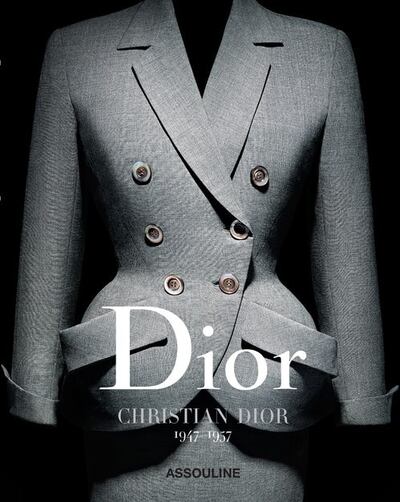
Christian Dior | Source Assouline
ADVERTISEMENT
There have been many beautiful photographic books devoted to the genius of Christian Dior and the work of the designers who carried on the label from his sudden death to today: Yves Saint Laurent; Marc Bohan, Gianfranco Ferre, John Galliano, Raf Simons and, currently Maria Grazia Chiuri. Now the House of Dior has decided to honour them by devoting a volume to each one. By the end of the series, these volumes will be the fashion equivalent of a catalogue raisonné of the achievements of a company that started as a leader and has remained in that position ever since the morning in 1947 when Christian Dior showed his first couture collection and changed fashion for ever.
The books will highlight the collections for which each of the designers who were to take over the label's design after Dior's untimely death in 1957, so that with the final volume will provide an entire picture of the house. It is an inspired and confident idea and the first volume, devoted to Christian Dior himself, suggests that this will be a major work when finished. It is to be published in February to mark the 70th anniversary of the Dior label. Beautifully photographed by Laziz Harmani; bound in Dior's signature grey, it will surely become a collector's item. But what makes this a special volume, worthy of its subject, is the preceptive and jargon-free text by Olivier Saillard, director of the Palais Galleria, one of the very few fashion writers who is actually readable and considered by many to be the best fashion writer working today — who can show his erudition and deep involvement with fashion in a way that clarifies and involves the reader without the obfuscation used by so many current commentators to impress rather than inform. I look forward to the same writer and photographer guiding us through the work of the other Dior designers to whom each volume will be devoted.
Alexander McQueen Unseen (Thames & Hudson)
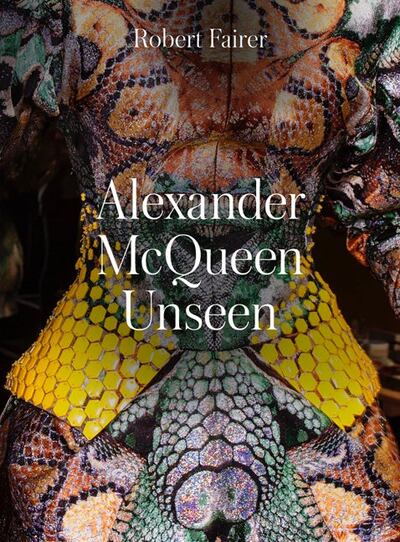
Alexander McQueen | Source: Thames & Hudson
Books devoted to designers have had quite a run with publishers in the last few years. Well designed, beautifully printed, they could be seen as a form of vanity publishing and — it must be — are often so uncritical that they could be called the dizzy blondes of illustrated books: beautiful but dumb.The formula is simple. A good designer, high quality colour printing (normally done in China), a few pictures of the designer relaxing and a few more of him working in the atelier, and a couple of commentary pieces by known names — pieces only too often pretentious and almost always veering dangerously close to hagiography. None of this is worth the paper it is written on and certainly is not a reason to buy these expensive tomes.
The Alexander McQueen print archive is already rivalling those devoted to Chanel, Prada, and one or two others. And this season there is yet another book. "Alexander McQueen Unseen," by photographer Robert Fairer, with commentary by Clare Wilcox of the Victoria & Albert museum, who was largely responsible for the phenomenal success of the exhibition, is a handsome tome. Although basically a picture book, it is an authentic one, as all the pictures were taken behind the scenes at the shows. But it would be wrong to imagine that a feeling of déjà vu hangs over it. What makes this book work is the feeling the reader gets of being in the picture with the models, the designer and all the other dedicated back stage people working so intensely on creating their own special contribution to the creation of the miracle. But, above all, and especially for students or beginners in fashion, is the clarity with which Fairer's camera highlights the fabrics and the details that shine out clear and strong.
Hair by Sam McKnight (Rizzoli)

Hair by Sam McKnight | Rizzoli
I have never met Sam McKnight but it is clear from all the happily smiling faces here that he is not just a very good hairdresser, but one with a talent to amuse. He has worked — and still does — with fashion's royalty, including models, from Kate Moss (almost ubiquitous in any fashion book these days) to Karlie Kloss and every supermodel in between — all looking marvellous thanks to Sam's genius with a comb and dryer — photographers, going back to Horst P. Horst, with whom Sam worked as long ago as 1986, Arthur Elgort, Patrick Demarchelier, Craig McDean, Mario Testino and Nick Knight; not to mention designers like Lagerfeld and Westwood and stylists from every cool magazine you can think of.
This amazingly good-humoured and joyous book is a compilation selected from 40 thousand images. They are all superb. And there are many pictures of Sam himself — still smiling after 40 years and ready to wear a selection of crazy wigs and glasses to prove it in the book's endpapers. But perhaps the best shots of all are the test polaroids used to check hair and make-up before the final pictures are taken.
Versace (Rizzoli)
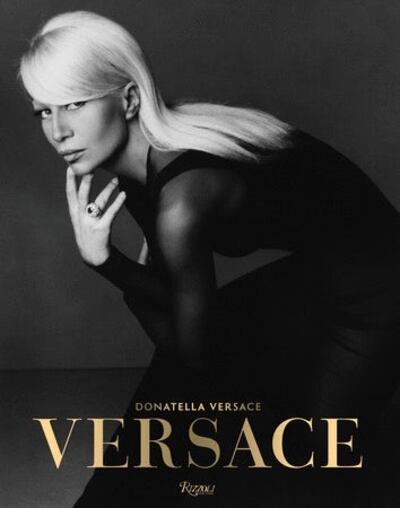
Versace | Source: Rizzoli
When Gianni Versace was murdered in 1997, many people felt that would be the end of the highly successful fashion house he had founded. Most who took that view did not realise that his sister Donatella, despite her youth, was not just a rock-chick groupie to her brother, but already responsible for a subsidiary line. So, those in Milan who thought Versace was a label that could not survive without the eponymous head — and there were many — were surprised when Donatella stepped up to the plate. Their surprise turned to a grudging praise as, after a few inevitable slips and slides, it became clear that, although never once wishing to better her brother in any way, she had saved the company by creating her own riff on its DNA. No pastiches. No showing off. Just a steady belief in what she felt Gianni might be doing were he still alive. This book has taken time, just as Donatella's Versace has to reach its peak. But in both cases, the wait has been worth it. Of all the books reviewed this Christmas, this is one that has given me the most visual pleasure. Because it gives us spreads of the major looks per season, it is also the most useful reference for fans, writers and fashion historians.
Disclosure: Colin McDowell has contributed a forward to "The Fashion Set," for which he received no payment.
From analysis of the global fashion and beauty industries to career and personal advice, BoF’s founder and CEO, Imran Amed, will be answering your questions on Sunday, February 18, 2024 during London Fashion Week.
The State of Fashion 2024 breaks down the 10 themes that will define the industry in the year ahead.
Imran Amed reviews the most important fashion stories of the year and shares his predictions on what this means for the industry in 2024.
After three days of inspiring talks, guests closed out BoF’s gathering for big thinkers with a black tie gala followed by an intimate performance from Rita Ora — guest starring Billy Porter.